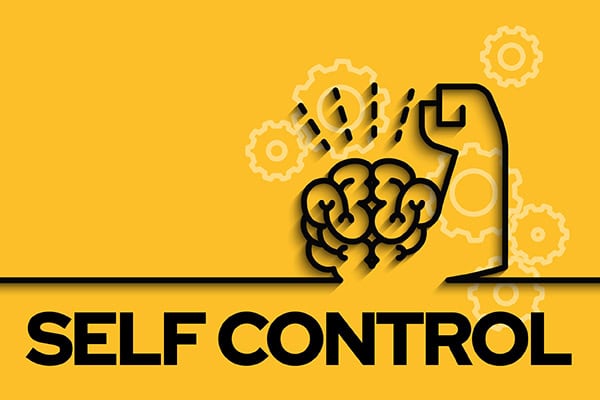Every classroom is filled with moments where students face choices that test their self-control. Do they follow through on a challenging assignment, or avoid it? React respectfully to a teacher’s feedback, or lash out? Educators around the world grapple with these scenarios daily.
Larry Thompson — a former principal, an expert on support discipline and the creator of Responsibility-Centered Discipline™ (RCD™) — believes we are looking at these moments the wrong way. Rather than relying on rules and consequences, Thompson argues that self-control is the key to improving student behavior, and it should be viewed as a muscle that can be strengthened over time. Like any muscle, it needs deliberate practice, guidance and the right kind of “spotting” to grow.
Understanding Self-Control as a Skill
At its core, Responsibility-Centered Discipline shifts the focus of school discipline from external rewards or punishments to internal growth. The idea is not to bribe or scare students into good behavior but to provide them with the tools to self-regulate, even in the most difficult circumstances.
“Self-control is like a muscle,” explains Thompson. “You can strengthen it in a person. What our kids really lack is a lot of self-control, whether that means doing their work, being respectful to a teacher or handling frustration appropriately.”
The analogy of self-control as a muscle is more than just a metaphor. Like physical muscles, self-control develops when exercised, especially in moments of resistance. These “weight-lifting” opportunities come when students are faced with hard decisions, whether it’s completing an assignment they’re tempted to avoid or calming themselves during a conflict.
The Role of Spotting in Building Self-Control
Thompson introduces the concept of “spotting” in education, comparing it to the role of a trainer or partner in the gym. Just as a spotter provides just enough assistance to prevent failure without taking over the lift, educators must find the balance between helping and allowing students to struggle enough to build resilience.
“If you’re a trained spotter, you give just enough help,” Thompson elaborates. “A good spotter is so subtle that the person lifting is unsure whether you’re even assisting at all.”
This nuanced support allows students to build the skills they need to manage challenges on their own, a crucial step toward achieving autonomy and resilience in the classroom. However, as Thompson notes, overspotting—doing too much for a child, like completing their work or constantly stepping in to solve their problems—diminishes the learning opportunity. When children don’t experience the struggle, they lose the chance to develop the “muscle” of self-control.
Mastery, Autonomy and Purpose in the Classroom
To create an environment where self-control can thrive, educators must go beyond punishment-and-reward approaches. Instead, they should aim to foster mastery, autonomy and purpose, which Thompson identifies as critical components of internal motivation.
Mastery
A sense of mastery comes when students accomplish something that challenges them. It’s where self-esteem is truly built—not through empty praise or rewards, but by tackling and overcoming hard tasks.
“Mastery moments change kids,” says Thompson. “They walk differently. Their self-esteem is rooted in these moments of accomplishment—not in someone telling them they’re great, but in knowing they truly achieved something.”
Educators can encourage mastery by setting clear expectations, then allowing students to experience and overcome struggles with minimal intervention.
Autonomy
Autonomy is the feeling of being in control of one’s own actions. Traditional rule-heavy environments often lead to power struggles, as children resist being controlled. Instead of setting strict rules, Thompson suggests reframing them as skills.
For example, instead of saying, “You’re not allowed to talk while I’m teaching,” a teacher can frame it as, “One skill we are working on today is showing respect during instruction by listening quietly.” This subtle shift reduces defiance by engaging the student’s internal sense of autonomy.
“Rules fight autonomy,” Thompson says. “We should be asking, ‘What makes this child feel strong here?’ Their strength should come from achieving the goal, not opposing authority.”
Purpose
Purpose ties it all together, giving students a sense of meaning in the classroom and beyond. When students see the value in their work or understand how their behavior impacts others, they’re more likely to engage and persist through challenges.
For instance, a struggling student might not initially see the point of following instructions or completing homework. By framing these actions as steps toward their own success and independence, educators can help connect the dots between effort and purpose.
Practical Strategies for Educators
The strategies outlined by Thompson are rooted in real-world application. Here are some key takeaways for building student self-control while fostering mastery, autonomy and purpose:
1) Reframe Rules as Skills
Instead of giving orders, frame expectations as skills that students are developing. This shifts the goal from obeying authority to personal growth. For example, rather than saying, “No talking in the hallways,” use, “We’re working on showing respect for others by walking quietly in the hallway.”
2) Build Mastery Moments
Design activities that allow students to experience success after hard work. If they struggle, spot them just enough to help them complete the task without taking over. Celebrate these small wins to reinforce their ability to overcome challenges.
3) Encourage Honest Self-Assessment
Help students reflect on their performance. Questions like, “What went well today?” or “What could you do differently next time?” foster self awareness and accountability. For younger students, simple techniques like a thumbs-up or thumbs-down system can help them communicate how they’re feeling and invite support.
4) Create a Safe Environment for Vulnerability
Students carry stress and trauma into the classroom that can impact their behavior. Provide a safe space where they feel they can be honest without fear of judgment. For example, allow students to indicate if they’re having a tough day and approach them with empathy instead of punishment.
5) Serve as a Coach, Not a Controller
Educators should view their role as more of a coach than an enforcer. Coaches provide guidance, encouragement and the right level of challenge to inspire growth. They understand that every student is different and adapt their approach accordingly.
“Great coaches move all their players up,” says Thompson. “The job of winning isn’t to rely on your stars. It’s about helping everyone improve together.”
Transforming Student Behavior Through Responsibility-Centered Discipline
Thompson’s approach to school discipline has gained widespread recognition for its ability to transform classrooms and empower students. By focusing on building self-control as a skill, rather than relying solely on external discipline, educators can create lasting changes that benefit both students and teachers.
The shift isn’t easy. It requires patience, intentionality and a willingness to adapt. The results are powerful. Students not only become more capable of managing their emotions and decisions — they also develop the confidence and resilience needed to thrive in school and beyond.
Watch the Heart vs. Hammer with Larry Thompson podcast.
To learn more about bringing Responsibility-Centered Discipline to your school, visit Givemfive.com.





